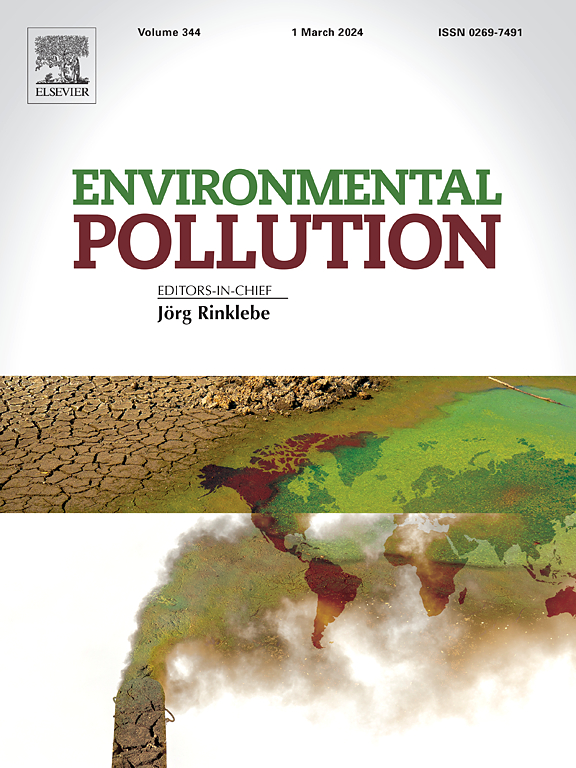Association of organophosphate flame retardants exposure with liver function and the contrasting mediating roles of inflammatory and oxidative stress pathways
IF 7.6
2区 环境科学与生态学
Q1 ENVIRONMENTAL SCIENCES
引用次数: 0
Abstract
Organophosphate flame retardants (OPFRs) have been widely used as alternatives to traditional halogenated flame retardants, resulting in their pervasive environmental presence and significant human exposure. While animal studies using high doses of individual OPFRs have demonstrated hepatotoxicity, evidence of hepatic effects from chronic and low-dose exposure to OPFRs in humans is scarce, and the underlying mechanisms remain largely unknown. In this study, we evaluated the association between urinary metabolites of OPFRs (mOPFRs) and liver function biomarkers in a population aged 1–79 years from the Guangzhou Human Biomonitoring Program. Urinary concentrations of diphenyl phosphate exhibited a significant decreasing trend with increasing age across four age groups (≤12, 13–17, 17–59, ≥60 years), while bis(1-chloro-2-propyl) phosphate concentrations showed a significant positive association with age. Urinary mOPFRs were positively associated with alanine aminotransferase, gamma-glutamyl transferase, and aspartate aminotransferase, and negatively associated with indirect bilirubin levels. Urinary mOPFRs were significantly correlated with total bilirubin, which was consistent with that observed in the National Health and Nutrition Examination Survey database, while other associations were inconsistent. Moreover, we evaluated the roles of inflammatory and oxidative stress markers in the association between urinary mOPFRs and liver function biomarkers by mediation analysis. The results demonstrated that the mediation effects of inflammatory markers were consistent with the total and direct effects of mOPFRs on liver function biomarkers, whereas the mediation effects of oxidative stress markers were discrepant. Inflammation likely exacerbates the adverse effects of OPFRs on liver function, while oxidative stress may play a protective role. We further searched the comparative toxicogenomics database for genes associated with OPFRs and liver function biomarkers to understand the potential regulatory mechanisms.

有机磷阻燃剂暴露与肝功能的关系以及炎症和氧化应激途径的对比中介作用
有机磷酸盐阻燃剂(OPFRs)作为传统卤化阻燃剂的替代品已被广泛使用,其应用范围广泛。
本文章由计算机程序翻译,如有差异,请以英文原文为准。
求助全文
约1分钟内获得全文
求助全文
来源期刊

Environmental Pollution
环境科学-环境科学
CiteScore
16.00
自引率
6.70%
发文量
2082
审稿时长
2.9 months
期刊介绍:
Environmental Pollution is an international peer-reviewed journal that publishes high-quality research papers and review articles covering all aspects of environmental pollution and its impacts on ecosystems and human health.
Subject areas include, but are not limited to:
• Sources and occurrences of pollutants that are clearly defined and measured in environmental compartments, food and food-related items, and human bodies;
• Interlinks between contaminant exposure and biological, ecological, and human health effects, including those of climate change;
• Contaminants of emerging concerns (including but not limited to antibiotic resistant microorganisms or genes, microplastics/nanoplastics, electronic wastes, light, and noise) and/or their biological, ecological, or human health effects;
• Laboratory and field studies on the remediation/mitigation of environmental pollution via new techniques and with clear links to biological, ecological, or human health effects;
• Modeling of pollution processes, patterns, or trends that is of clear environmental and/or human health interest;
• New techniques that measure and examine environmental occurrences, transport, behavior, and effects of pollutants within the environment or the laboratory, provided that they can be clearly used to address problems within regional or global environmental compartments.
 求助内容:
求助内容: 应助结果提醒方式:
应助结果提醒方式:


